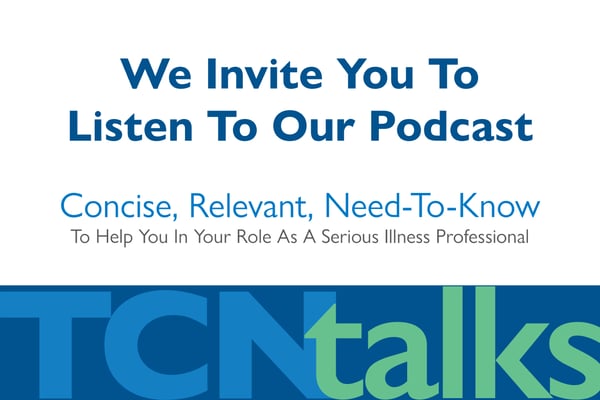
I have spent nearly twenty years in healthcare focused on care delivery for patients with advanced and serious illness. Like many in my professional circles, value-based care is a topic of constant discussion. If we are honest, healthcare professionals find the value-based care discussion filtering into many interactions including conferences, dinners, etc.
A couple of weeks ago I was on the golf course with a group of healthcare professionals and we could not resist the urge to indulge in the discussion about the impact of value-based care. About halfway into the discussion, one of my colleagues turned to the rest of the group and asked the question, “Do we really think value-based care is here to stay?” My initial response was, “Of course” and “Why?” Fortunately, I was up to tee off and I bought myself a couple of weeks to process.
Below is my response to my colleague’s question but first a little background
The healthcare industry has been in the midst of significant transformation over the past twenty years. The headlines read of a growing demand with the impending aging of the Baby Boomers, staffing shortages due to the great resignation, looming financial burden as the healthcare percentage of GDP creeps past 20%, so on and so forth. The reality is that the current fee-for-service system is not perfect, and all of these headlined challenges have only exacerbated the underlying problem that healthcare needs to shift from quantity to quality of care.
This change has led to the emergence of value-based care, which is quickly gaining traction in the industry. Value-based care is a healthcare delivery model that emphasizes the value and outcomes of patient care, rather than the volume of services provided.
Improved Patient Outcomes: The primary objective of value-based care
In value-based care models, healthcare providers are encouraged through incentives to focus on the patient's overall health rather than treating individual symptoms. Also, providers are incentivized to take a proactive approach to patient care, promoting preventative measures and early intervention to improve patient outcomes. As a result, patients are more likely to receive timely, effective treatment that prevents the need for costly and invasive procedures down the line.
Cost Savings: Another critical aspect of value-based care
By focusing on the value and outcomes of care, providers are incentivized to identify and address the root cause of health problems, rather than just treating the symptoms. This approach can help prevent expensive hospital stays, readmissions, and unnecessary procedures, resulting in significant cost savings for patients and providers alike.
Payment Reform: Aligning payment and outcomes
Historically, healthcare providers were paid for each service they provided, regardless of whether it led to better patient outcomes. This fee-for-service model incentivized providers to deliver more services, rather than better care. However, value-based care models reward providers for achieving better patient outcomes, creating an incentive for providers to deliver more efficient and effective care.
Healthcare Culture: Shifting from treatment to prevention
The shift to value-based care represents a significant change in the culture of healthcare delivery. Providers are no longer solely focused on treating illness but are now more focused on promoting wellness and preventing disease. This cultural shift has led to the development of new technologies, tools, and techniques that are designed to improve patient outcomes, reduce healthcare costs, and enhance the overall patient experience.
Promoting Accountability
Value-based care models promote accountability among providers. In traditional fee-for-service models, providers are not held accountable for the outcomes of their patients. In value-based care models, providers are held accountable for the quality of care delivered and the outcomes achieved. This encourages providers to focus on delivering evidence-based, patient-centered care and ensures that patients receive the best possible care.
Aligning Incentives
Value-based care models align incentives between providers and payers. In traditional fee-for-service models, providers are incentivized to provide as many services as possible to patients, regardless of the necessity or effectiveness of those services. This can lead to unnecessary services and increased healthcare spending. In value-based care models, providers are incentivized to deliver high-quality, cost-effective care, which benefits both patients and payers.
CMS/Government Support
The Centers for Medicare and Medicaid Services (CMS) has implemented several programs to incentivize healthcare providers to shift towards value-based care models. Additionally, many private payers are also offering value-based care contracts, further driving the shift towards this healthcare delivery model.
Healthcare Industry Support
Healthcare organizations are also embracing value-based care models. Many providers and healthcare systems have implemented value-based care models, such as accountable care organizations (ACOs), which focus on delivering high-quality, coordinated care to patients. In addition, many healthcare organizations are investing in population health management, which aims to improve the health of entire populations through preventive care.
The conclusion, my friends: value-based care is here to stay. Healthcare needs to evolve to be sustainable. We need a delivery system focused on improving patient outcomes, reducing healthcare costs, driving payment reform, promoting a cultural shift towards preventative care, and it needs to be supported by a bipartisan government. Value-based care, while not perfect, is an attractive model for healthcare delivery.
As providers continue to embrace value-based care, we can expect to see significant improvements in the quality and efficiency of patient care, leading to better health outcomes and a more sustainable healthcare system.
Christopher Morrissette
Chief Strategy Officer

Leadership Immersion
LEARN MORE
Teleios University (TU)
Discover More
Register Today!

An organizational model that allows nonprofit hospices (Members) to leverage best practices, achieve economies of scale and collaborate
in ways that better prepare each agency to participate in emerging alternative payment models and advance
their charitable missions
Related Posts
Closing the Gap: Addressing Social Determinants of Health and Racial Disparities in Hospice Care
Across the past few years, our society has become increasingly aware of the social, economic, and...
The Duke Endowment Invests in Non-profit Advanced Illness Care Model
HENDERSONVILLE, NC – The Teleios Collaborative Network, through its member organization Four...
Mission-Driven Growth In Hospice: Why Sales Shouldn't Be A Bad Word
In 2005, I began promoting hospice services in my community because I thought, “I love hospice, and...



